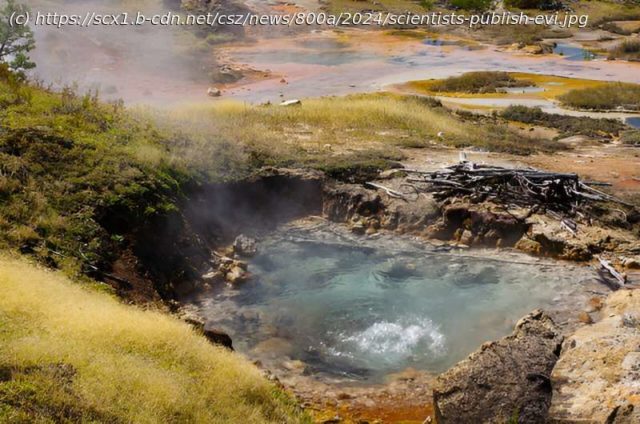A team of scientists from Montana State University has provided the first experimental evidence that two new groups of microbes thriving in thermal features in Yellowstone National Park produce methane—a discovery that could one day contribute to the development of methods to mitigate climate change and provide insight into potential life elsewhere in our solar system.
A team of scientists from Montana State University has provided the first experimental evidence that two new groups of microbes thriving in thermal features in Yellowstone National Park produce methane—a discovery that could one day contribute to the development of methods to mitigate climate change and provide insight into potential life elsewhere in our solar system.
The journal Nature this week published the findings from the laboratory of Roland Hatzenpichler, associate professor in MSU’s Department of Chemistry and Biochemistry in the College of Letters and Science and associate director of the university’s Thermal Biology Institute.
The two scientific papers describe the MSU researchers’ verification of the first known examples of single-celled organisms that produce methane to exist outside the lineage Euryarchaeota, which is part of the larger branch of the tree of life called Archaea.
The methane-producing single-celled organisms are called methanogens. While humans and other animals eat food, breathe oxygen and exhale carbon dioxide to survive, methanogens eat small molecules like carbon dioxide or methanol and exhale methane. Most methanogens are strict anaerobes, meaning they cannot survive in the presence of oxygen.
Scientists have known since the 1930s that many anaerobic organisms within the archaea are methanogens, and for decades they believed that all methanogens were in a single phylum: the Euryarchaeota.
But about 10 years ago, microbes with genes for methanogenesis began to be discovered in other phyla, including one called Thermoproteota. That phylum contains two microbial groups called Methanomethylicia and Methanodesulfokora.
« All we knew about these organisms was their DNA », Hatzenpichler said. « No one had ever seen a cell of these supposed methanogens; no one knew if they actually used their methanogenesis genes or if they were growing by some other means.
Home
United States
USA — IT Scientists publish first experimental evidence for new groups of methane-producing organisms






